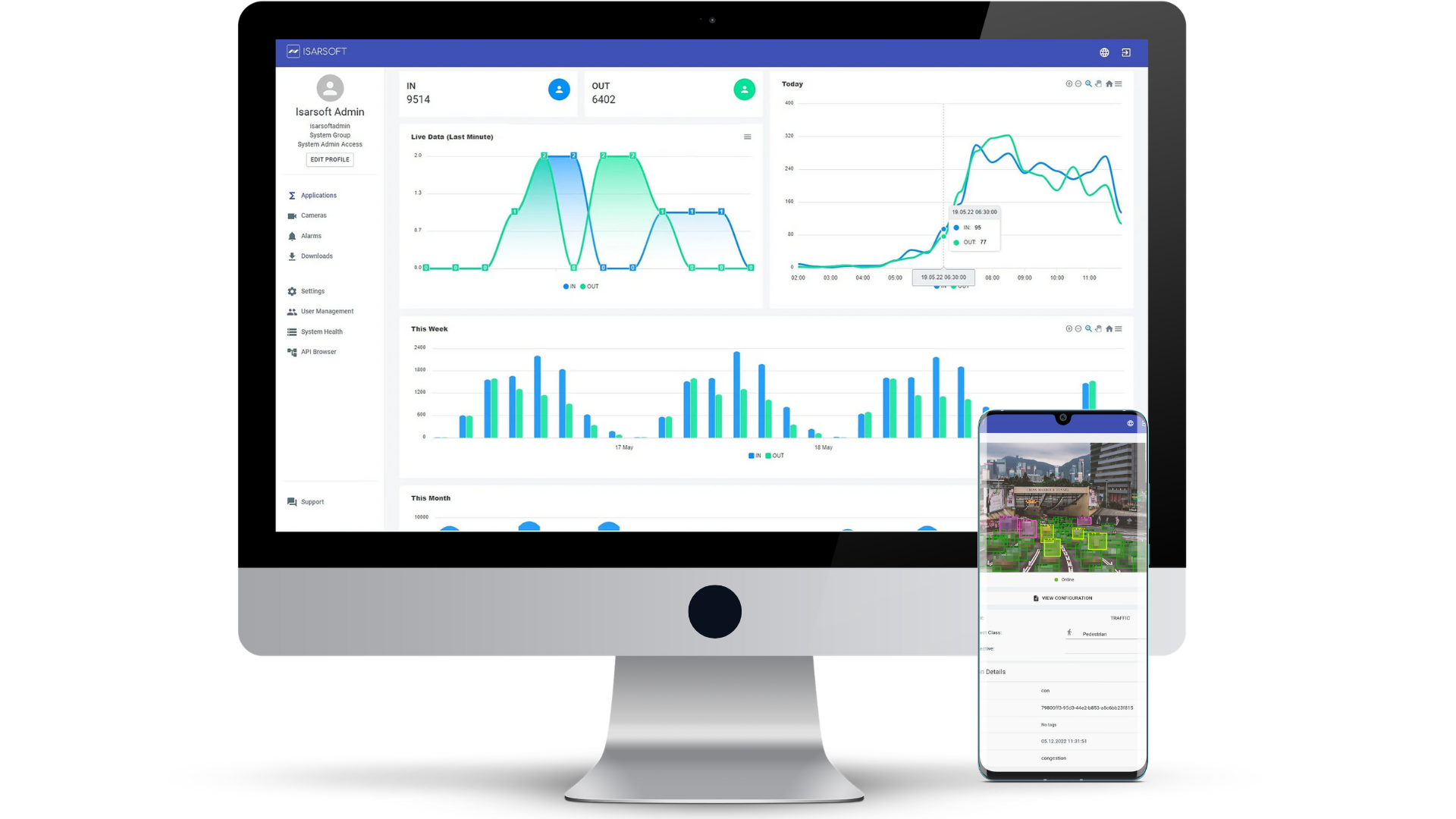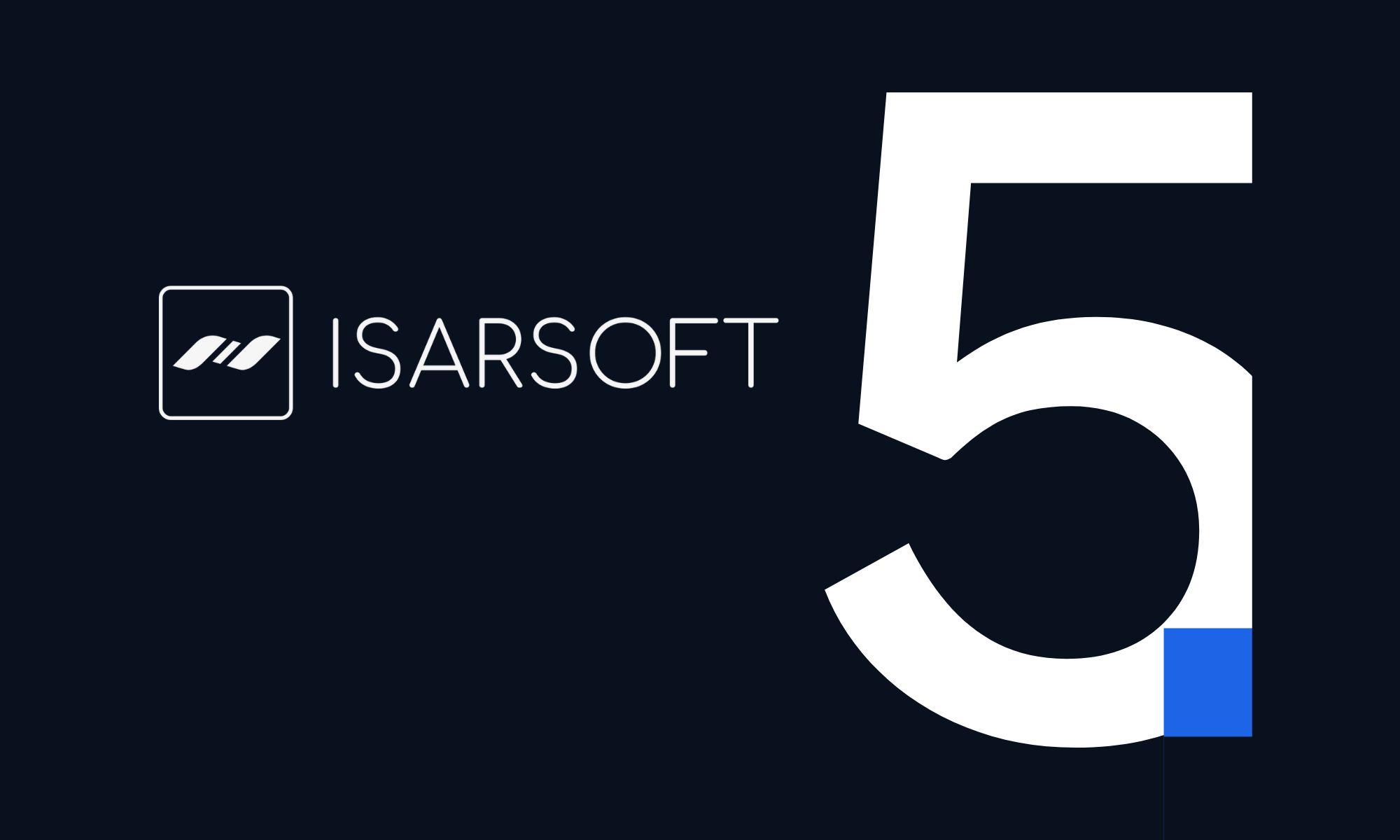AI in Retail
Artificial Intelligence (AI) and retail, if combined, can generate results that simplify and automate many existing processes in the industry, while helping business owners maximize profit. In this article, we conduct an exploration of AI in retail - uses, benefits, and impacts - and highlight how it can be best put to use.
Published
August 28, 2023
.avif)
Introduction
The Importance of Retail Management
Retail management plays a primary role in driving the success of retail businesses. It is a many-pronged devide, comprising several sub-categories.
- Strategic Decision Making - A retailer needs to chart out a course of action to ensure the success of his business, especially in the context of the goals and directions to be fulfilled. In order to do this, retail managers are required to conduct market research, analyze competitor behavior, and study the feedback from customers. All of these steps are then combined to form a retail strategy that encompasses areas such pricing and promotional strategies, product placement, store layout, and marketing initiatives.
- Customer Satisfaction - The retail domain involves direct communication with customers. Customer satisfaction is one of the most important KPIs when assessing the profitability of a business, and requires regular monitoring. Retail personnel are required to study and understand customer needs, and ensure that their endeavors address the necessary pain points. The quality of customer service can be gauged by monitoring factors like customer retention and customer loyalty.
- Inventory Management - Inventory management is a process that deals with taking stock of products and ensuring that they are available as and when required. Effective inventory management is linked to business cutting costs and saving resources, while at the same time being able to maximize operational profit. Some of the ways in which to do this is by analysis of demand patterns and by using forecasting techniques.
AI in the context of Retail
Artificial Intelligence (AI) is an applied function of computer science, with the primary objective of replicating human intelligence and logical reasoning in machines. This is done to aid operational processes and accuracy.
The retail industry offers a vast scope of application for AI to be implemented. Take, for example, an inventory management system that is regulated by AI. This does not just lead to greater efficiency in the context of time and resources, but can also be used to identify and detect theft, unauthorized access, and loss.
Retailers can use AI to improve various aspects of their business. Some examples include enabling a personalized customer and in-store experience, streamlining pricing and promotional strategies based on consumption and demand, and optimizing operations. These are some of the aspects that shall be touched upon in this blog article, in addition to an in-depth look at the impact of AI.
AI-based Solutions for Retail
Streamlining Operations
One of the primary contributors to the success of a physical retail business is through the streamlining of operations. In order to effectively do this, retail personnel can make use of a host of different AI-powered features.
Inventory Tracking and Management
One of the main benefits of an AI-powered inventory management system is that it happens in real time. Data is collected in an efficient manner by integrating the POS systems in a store or outlet. This enables personnel to have constant and reliable access to inventory specifics across multiple locations and channels, facilitating better management.
It can also be used to monitor inventory levels as per demand, timing, or seasonality - and automate the process to allow for automated replenishment. How this works is by setting a certain level as the threshold. Whenever stock dips below the threshold level, an alarm can be configured to alert personnel that the restocking needs to commence.
Automated Check-out
One of the great ways in which AI can be used is by conservation of human resources, and letting automation take center stage in areas where human involvement may not be essential.
In case of AI-oriented check-out systems, computer vision technology comes into play. What this enables is the identification and tracking of products as they are placed by customers onto the check-out counters. Computer vision algorithms can be trained to accurately identify a large variety of products, even if partially obscured from view. Product attributes such as size, shape, weight, and color are important markers and are used to train algorithms for identification.

Customer Segmentation
AI can be used by retailers to gather data that highlights customer behavior and attributes such as age demographics, product preferences, respective needs and pain points, etc. The process of gathering this data is referred to as customer intelligence, and is used to perform customer segmentation.
What does this mean, exactly?
Simply speaking, customer segmentation is the process of segmenting or splitting a customer database into groups based on age, gender, buying habits, etc. This allows targeted product placement designed to cater to the different target groups, allowing retailers to get a better idea of which sales strategies are effective, popular products, and how to market in a manner that specifically address the different customer groups.
Fraud Detection and Prevention
Fraud detection in retail is a common occurrence and can be broadly divided into three categories - employee fraud, customer fraud, and errant incidents of wrongdoing that cannot be attributed to either category.
AI can be utilized to analyse POS stations in a store, such as checkout counters. Transaction records and anomalies can be analysed to identify potential fraud. Thereafter, appropriate alerts are triggered, inducing speedy response from security personnel.
To learn more about loss prevention in retail and exactly how Isarsoft Perception tackles it, check out our blog article on the same here.
Enhancing Customer Experience
Customer experience is, briefly explained, the experience undergone by a customer while inside a store. This includes all of the interactions the customer has while in the premises - with employees and the retailer, with browsing and product selection, and check-out processes and store support.
AI can be used in a myriad of ways to enhance customer experience (CX), so that customers can easily and efficiently access usable resources during the shopping process.
Queue Management
Queue management refers to the regulation and streamlining of queues at the checkout-counters in retail. This can be achieved through the use of AI-powered video analytics, that processes and analyses video data in real time to generate insights such as the number of people in the queue, estimated dwell time, trajectory maps, position maps, etc. Through the detection and identification of people in queues, retailers can better handle issues such as overcrowding or bottle-necking by measures such as the deployment of more personnel or opening up more check-out counters.

The same applies for a judicious usage of resources. For example, when the store is not witnessing a lot of foot traffic, resources can be conserved by making fewer POS systems functional.
Reducing the wait time at check-out makes shopping a more accessible and pleasant experience.
Smart Displays
A large component of the shopping experience is what one can see, i.e, attractive images, digital signage, clearly marked directions. Shoppers engage with visual cues more than they do with any other sensory stimuli.

AI can be used to enhance an average shopping experience by making it more visually exciting through the incorporation of elements that simplify decision-making for the customer. The effectiveness of these elements can be measured by using AI-based video analytics.
Intelligent Store Design
Crucial for enabling a hassle-free shopping experience for all shopper groups including the elderly and the disabled, retail businesses can use AI to optimize their store design.
This can be done through measuring the efficacy of the existing layout and monitoring how each aspects works as part of the whole. In a supermarket, for example, some structural elements to monitor would be the area wherein shopping carts are stocked, aisle specifics such as length, breadth, and visibility, the navigational capacity of the store, and the design of the POS systems and their proximity to the exit.
Predictive Analysis
The retail industry is usually subject to changes, and fast - fluctuations in demand, economic conditions such as inflation, season-based buying habits, trends, etc. In order to keep up with anticipated or unanticipated changes in factors, retailers are required to use predictive analysis to better equip themselves for the future, while safeguarding their businesses from harm.
AI finds a lot of use in this domain, and can be leveraged to create a contingency strategy for almost every situation.
Some of the ways in which this can be done are as follows.
Demand forecasting, which is a tool used by business owners to assess the shifts in demand at any given point in time. A higher demand calls for increased production, while lower demand would signify that production needs to be toned down. Doing this can help retailers save a lot, in terms of time, money, and resources - while also helping them better understand common buying patterns through the year.
A similar principle can be applied to optimize the supply chain, and regulatory functions such as maintenance, repair works, etc.
As a rule of thumb, there are several overlapping areas retailers have to keep an eye on. This can be simplified through KPI analysis, wherein a set of the most important factors are evaluated regularly. Interested to learn which KPIs are top priorities for retail businesses? We have a blog article for that too!
Benefits of AI in Retail
There are several benefits to be gotten from the use of AI in retail, in the domains of planning, optimization, and security. Here are some of the most noteworthy:
Conversion Rate Optimization
Customer engagement analytics, when combined with conversion rate optimization (CRO) techniques, can lead to significant improvements in conversion rates. By analyzing customer engagement data, businesses can identify bottlenecks, barriers, and friction points in the customer journey that may hinder conversions. Through CRO, businesses can implement data-driven changes, such as store layout optimization or streamlining checkout processes with a queue management system (QMS) to maximize the percentage of visitors who convert into customers.
Read more in our article on customer engagement analytics and how businesses can foster meaningful relationships with customers to drive conversion figures.
Increased Engagement
AI can be used to improve engagement figures by measuring KPIs such as average transaction value (ATV) and customer lifetime value (CLV). These are reliable indicators of the effectiveness of sales and marketing strategies, and can be used by retailers to make informed decisions about how to sustainably grow the business.
Enabling a Personalized Experience
One of the predominant aspects of in-store retail is ensuring consistency at every customer touchpoint. In order to fully comprehend how customer touchpoints influence the business and impact the overall security of the store, the following steps bear significance.
- Mapping the Customer Journey: To identify and optimize touchpoints, it is essential to map out the customer journey. This involves understanding the customer's path from initial awareness to post-purchase activities and identifying key touchpoints along the way.
- Consistency across Channels: Consistency is crucial in delivering a seamless customer experience. Ensuring a unified brand voice, visual identity, and messaging across all touchpoints helps customers recognize and connect with the brand at various stages.
- Personalization: Tailoring touchpoints to individual customer preferences and needs enhances engagement and builds loyalty. Utilize data and insights to create personalized experiences that demonstrate a deep understanding of customers' wants and desires.
- Seamless Omnichannel Experiences: In today's digital age, customers expect a seamless transition between various channels. Ensuring that touchpoints are integrated across online and offline channels allows customers to engage effortlessly, whether they are browsing a website, visiting a physical store, or interacting on social media.
- Proactive Customer Support: Customer service touchpoints are critical opportunities to address concerns, resolve issues, and exceed expectations. By providing prompt, empathetic, and proactive support, businesses can turn potential problems into opportunities for exceptional service.
- Continuous Improvement: Regularly analyzing customer feedback, monitoring touchpoint performance, and making data-driven improvements are essential for staying attuned to evolving customer needs. Embrace a culture of continuous improvement to refine touchpoints and exceed customer expectations.
Enhanced Security
As mentioned earlier in the article, security is a crucial component of retail operations. From fraud detection to loss prevention, retailers can integrate AI into daily operations and benefit from it as a whole with regards to enhancing security within the store.
Challenges and Considerations
Data Privacy
While AI has the potential to offer countless benefits in the retail domain, it is important that data privacy standards be stringently maintained. One of the ways in which to do this is by ensuring the anonymization of data streams, to protect private information such as identity, financial figures, etc.
In the context of VSaaS for retail, privacy masks are a good way to carry out the same. It is automatic and applicable to any detected object, and makes privacy absolutely airtight.
It is also necessary to ensure that all AI-powered applications be compliant with local and global privacy regulations (GDPR for the EU, CCPA in the US, etc.)
Security
Data security refers to the safeguarding of digital data in a database against unwanted access such as in a cyber attack or data breach. The primary objective is to protect the data against exposure, deletion, or corruption.
There are many ways to implement good data security. Some well-known options are multi-factor authentication, encryption of data, and using a firewall. When applied in conjunction, they can largely enhance how secure the data is.
Ethical Decision-Making
One of the key advantages of AI is that it allows the automation of most operational processes, thereby allowing for less error and reduced bias. However, the human component is crucial in making sure that ethical principles are upheld when making important decisions.
True success with AI can only be achieved when a judicious mixture of man and machine comes together with the aim of eliminating bias.
Public Acceptance and Trust
Just as with any other phenomenon, the use of AI in retail can be fully implemented only when it is accepted by all stakeholders in the process - personnel, planners and architects, shoppers and retailers, and security personnel.
Awareness is imperative, as is positive reinforcement through consequence-based decisions to help cement the public’s trust in AI.
Future Trends and Innovations
The future of AI in retail is set to focus on automation and machine-driven assistance, with the objective of letting humans focus on more complicated tasks. Customer inquiries, for example, can be tackled by AI-powered chatbots and virtual assistants in physical stores.
Another future development expected to take shape is in the domain of green retailing, where AI is used by retailers to analyze supply chain, demand, and consumption data to make more prudent decisions about energy efficiency, waste reduction, usage of resources, and other environmentally friendly practices.
Video Tutorial
This video shows Isarsoft Perception in action, and exhibits how our software can be used to measure and monitor footfall in retail. The camera feed is focused on the motion-sensored entry/doorway of a supermarket. Isarsoft Perception identifies every person in the scope of the camera, and counts them. A running tally is kept based on the number of people who enter or exit the store in a given duration of time.
Further analysis can be conducted through the creation of zones and lines. A line is configured to measure volume, i.e, count the number of people who cross the line. Especially useful for doors, it could be used to analyze peak hours, demand, foot traffic, etc. Zones, on the other hand, are used to measure object density.
Isarsoft Perception enables users to create multiple zones and assess different areas of the video feed.
More about Isarsoft
With Isarsoft Perception, your camera systems become part of your business intelligence. Whether the goal is to increase efficiency, customer satisfaction or safety, Isarsoft Perception provides the insights needed for informed decisions.

Contact us, to learn more about how to turn security cameras into intelligent sensors.



